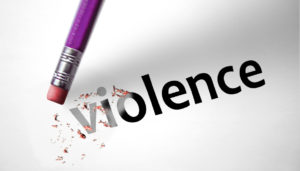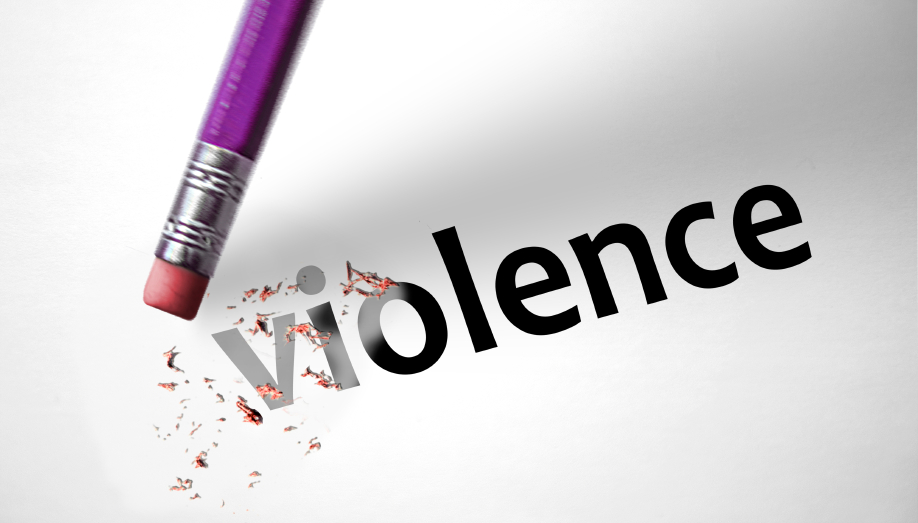

Teaching creative writing is always interesting, particularly when students create works that are triggering in one way or another. Teachers often struggle with what to do when they encounter overt and explicit violence in student writing, particularly when perpetrators of school shootings or other violence seems to actualize the worst in their students.
Some students have been disciplined for their writing when they had no intention of committing violence. Often, student writers include violence in their stories as an attempt to understand their complicated feelings about the brutality they see or experience. Students’ right to creative expression can and should be protected. This leaves teachers in the precarious position of deciding how to support creative writing that may contain violence while identifying the type of violent writing that may potentially be linked to aggressive acts.
National Council of Teachers of English: Teach students the difference between ‘violent writing and violence in writing’
It is essential that schools and writing teachers clarify the distinction between violent writing and violence in writing — and educate students on that difference. The National Council of Teachers of English suggests that while their creative freedom should be honored, students must learn the difference between “violent writing and violence in writing,” and should be counseled to avoid writing material that is “obscene, libelous, or substantially disruptive of learning.”
One way to help students understand the difference between work that may contain violence and writing that triggers concern is by developing and distributing a written department policy. According to Inside Higher Education, in the wake of the 2007 Virginia Tech shooting, the university’s creative writing faculty developed written guidelines for “responding to disturbing creative writing.” Since then, many more English departments have developed similar policies.
Identifying markers of unacceptable violent writing in a written policy
University policies for responding to violence in writing center around several key points that identify circumstances where the brutality of writing choices undermines rather than enhances literary effect. Markers of “violent writing” include:
- Lack of balance between violent and non-violent scenes
- Violence as a consistent topic in multiple writings
- Hostility and violence targeted at specific genders, races, religions or other groups
- Violence that is so extreme or explicitly described that it lacks a creative purpose
In other words, writing that uses violence as a character or plot device but otherwise reflects a layered literary sensibility may not indicate issues, but writing that features such detailed brutality that it distracts from other creative writing techniques might warrant intervention.
If a policy is established by the department, then communicated to students, they can gain a better understanding of when and how violence can be used in creative works by reflecting on their own and their peers’ writing choices. It is essential to protect student creative freedom, and departments or teachers who adopt policies regarding violence in writing should be careful to communicate to students that violence is not banned from their writing entirely, but is among a wide variety of tools that creative writers employ to tell a powerful story.
Using literature to explore the purpose of violence in fiction
To communicate the creative purpose of violence in writing, it can be helpful to create deliberate lessons about including violence in creative writing. As the blog Diary of a Goldfish points out, violence can be included in writing when it helps to tell a story, creates balance and reality in characters’ lives, and gives opportunities for character voices to drive narratives.
Teachers should develop lessons that examine the use of violence in different pieces of writing, from Austen to Alexie, and engage students in discussions of how and why authors chose to include such incidents in their writing. When students can see that authors they admire use violence in balance with a variety of other literary techniques, they are more likely to engage those habits in their writing.
Establishing and explaining creative writing policies to students helps writing instructors spot potential problems
Once a group of students is well-educated on a department’s policy regarding the difference between violence in writing and violent writing along with the literary purpose of violence in writing, it is significantly easier for instructors to differentiate between students exploring cultural or personal issues of violence within their creative writing and those who may be communicating intent through violent writing. These differences act to enhance rather than limit creative expression for students.
Clear policies that explain the difference between acceptable and problematic uses of violence in writing help students, teachers and administrators understand when intervention is necessary while leaving room for students to create their own “King Lear” or “Hunger Games.”
Monica Fuglei is a graduate of the University of Nebraska in Omaha and a current faculty member of Arapahoe Community College in Colorado, where she teaches composition and creative writing.
Categorized as: Tips for Teachers and Classroom Resources
Tagged as: Language Arts
